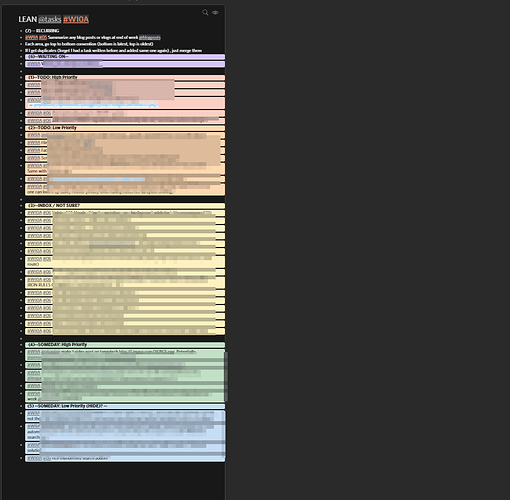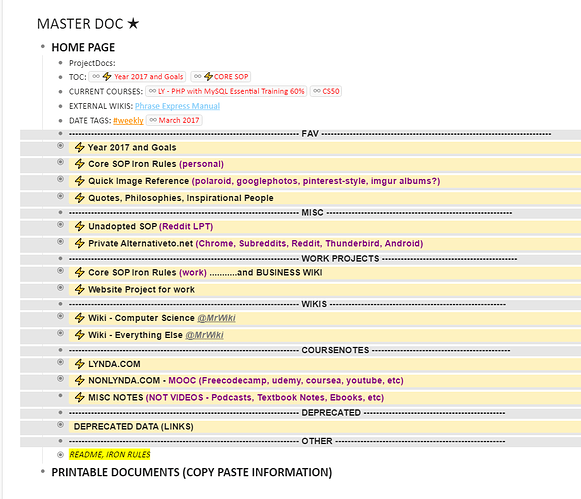I use a singular list now, after a couple of revisions. It makes it extremely easy to look at too
WAITING ON
TO DO - HIGH PRIORITY
TO DO - LOW PRIORITY
INBOX
SOMEDAY - HIGH PRIORITY
SOMEDAY - LOW PRIORITY
Items near top are higher priority, items lower on the stack are low priority
If I don’t know where it goes, it goes in inbox (e.g. massive dumping of tasks from another source like todoist)
If its something I have to do this week, it goes in TODO- high priority
if its something that I have to work on, but might not finish TO-DO low priority
If its something that needs to be done later, goes to someday -high priority / low priority
During week, cross out items as they are finished with CTRL+ENTER
Hide finished, CUT the items not finished, and paste into next week
Add more tasks as needed at any point in time
Add project tags, before, during , or after completion of tasks, but do it at least once a week on Sunday if not
If you want to have a daily bucket list, write it on a stickynote and cross it out throughout the day, adjust the lists in dynalist after
Can scale up and add as many items as you want
If I think of a task, then do it right away, make a oneliner task somewhere in my dailylog notes and cross it out


